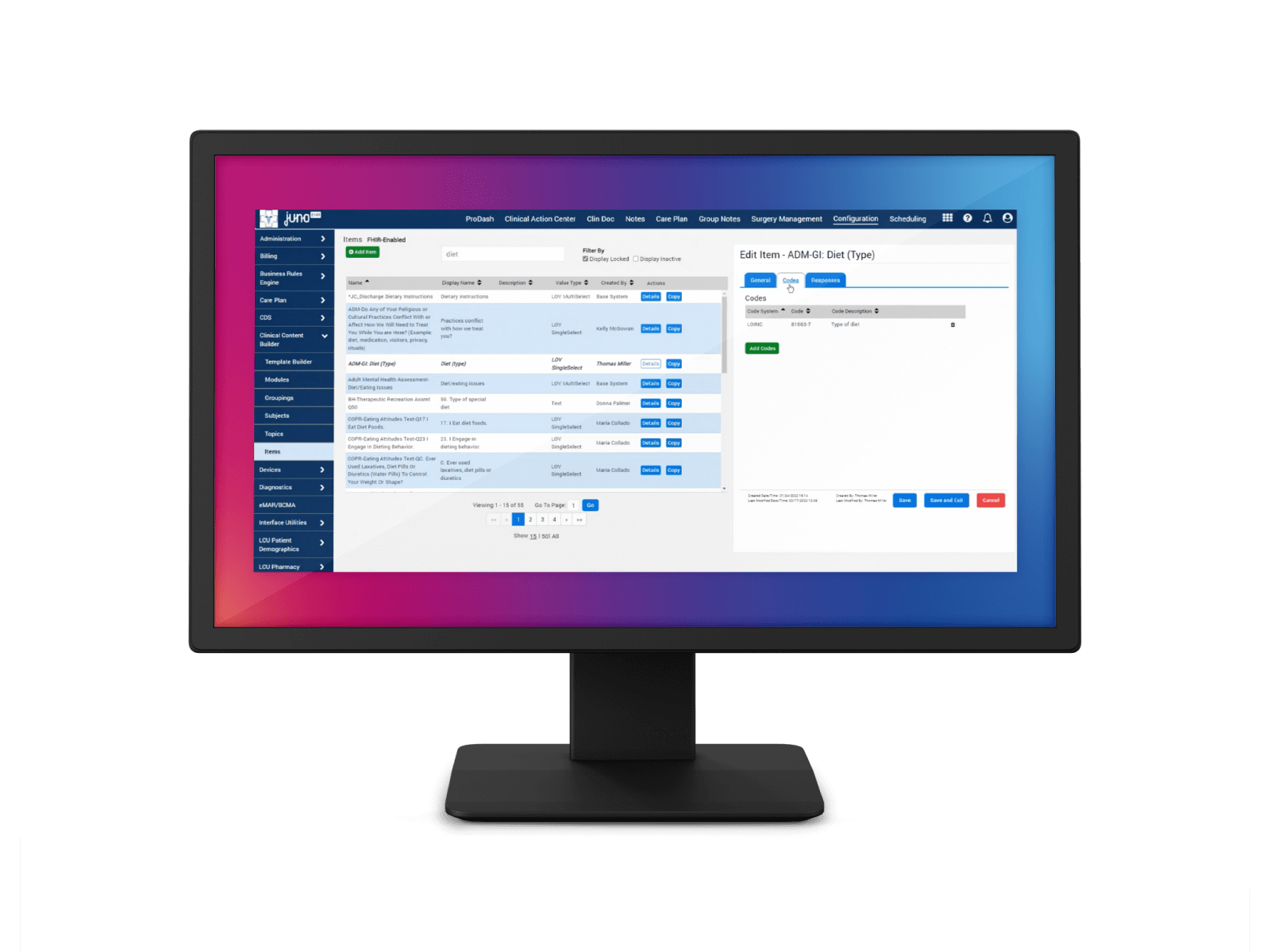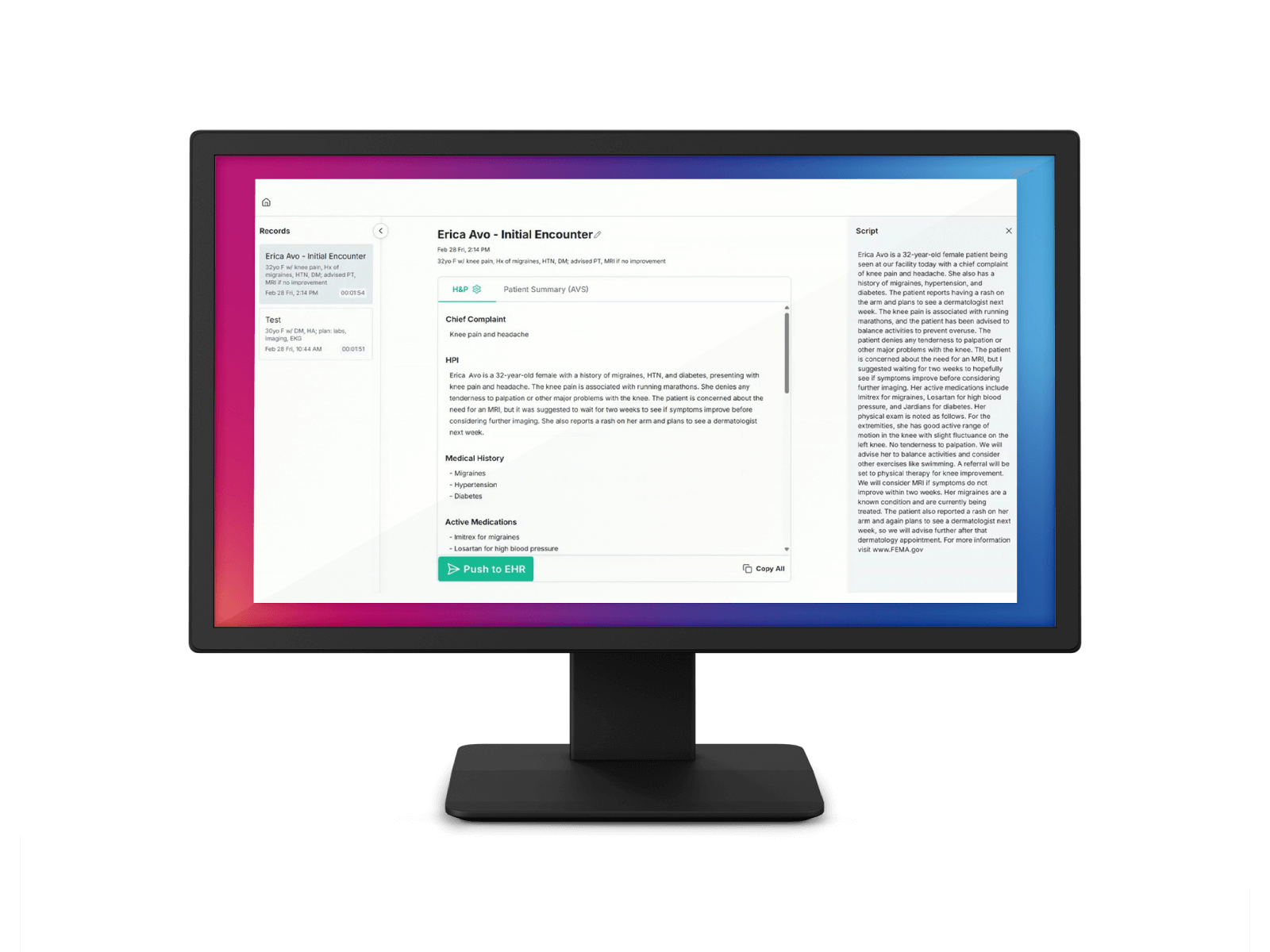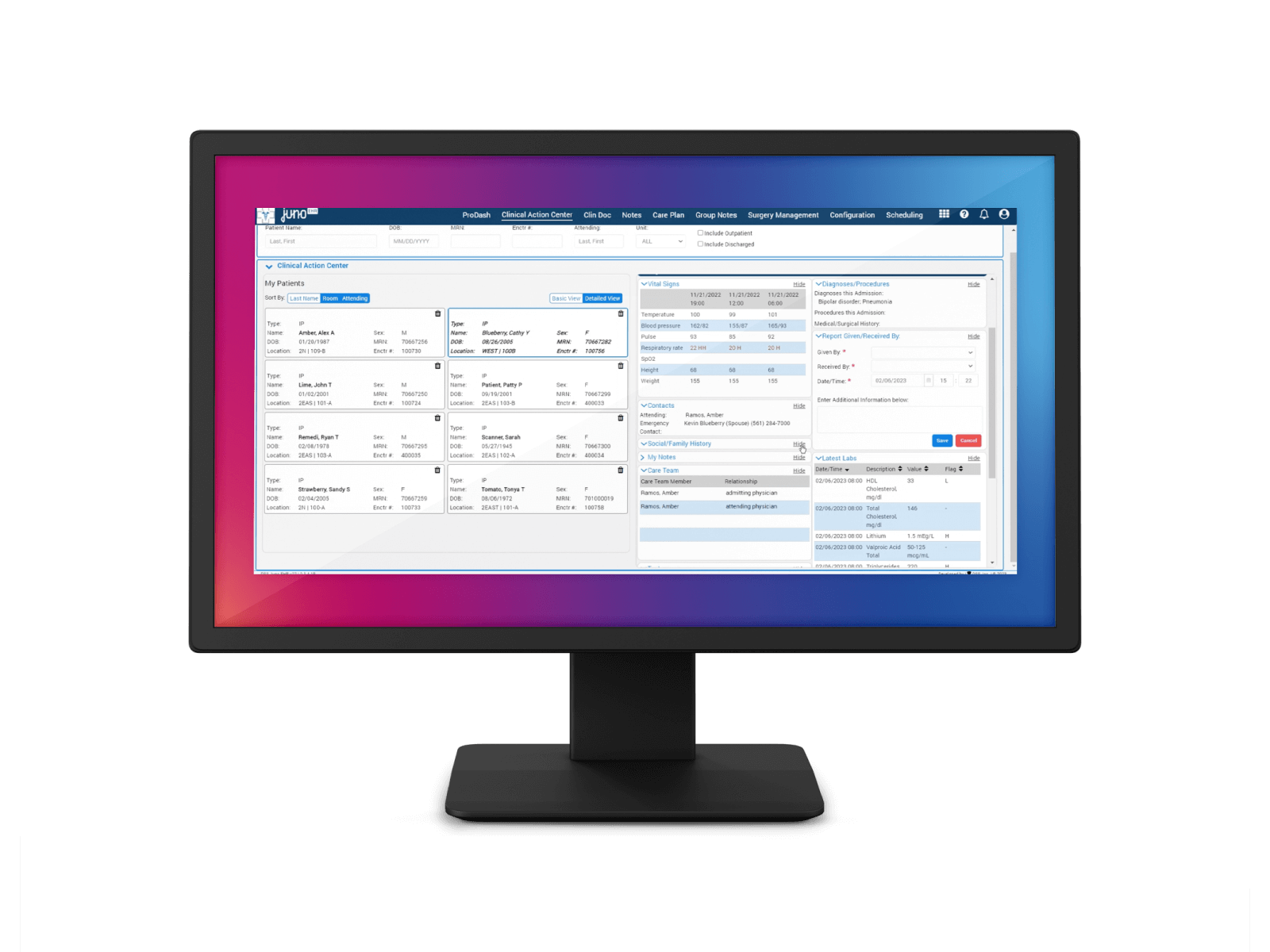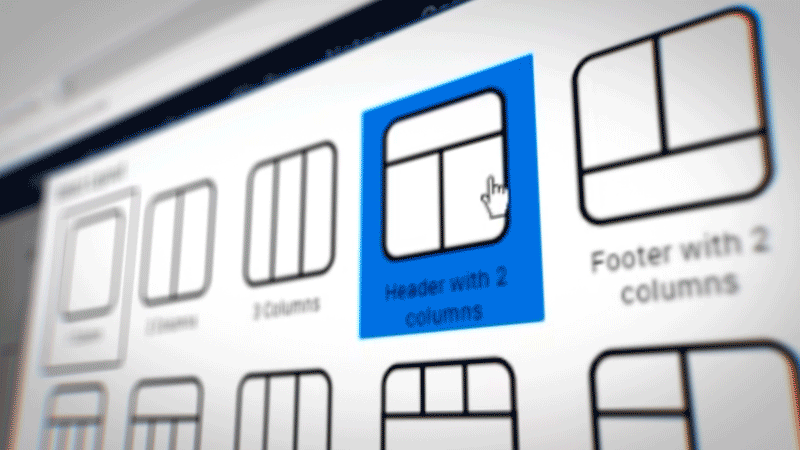Beyond Nurse Burnout: The Alarming Rise of CEO Burnout in Healthcare Leadership
Learn what causes executive burnout, how to spot it, and how to address it for sustained organizational success and leadership longevity.

Healthcare burnout is impacting U.S. medical professionals at an alarming rate. Labor shortages, challenging work conditions, and inefficient administrative systems are fueling exhaustion and stress in nurses, doctors, and CEOs, putting an already fragile healthcare system—and patient care quality—in peril.
That’s not just a statement for shock value—data backs it up. As recently as 2022, burnout contributed to a 33 percent turnover in clinical support and business operations staff. CEO burnout has become especially alarming, driving 70 percent of leadership turnover and jeopardizing organizational continuity. A comprehensive report revealed that 74 percent of healthcare leaders reported feeling burned out, with 93 percent of them acknowledging the serious organizational harm burnout could cause.
How has CEO burnout become such a burden? Navigate its driving forces, learn how to recognize the signs, and combat burnout in your healthcare organization.
4 Causes of Healthcare CEO Burnout
Working in healthcare today often feels like you're in a pressure cooker, where nonstop challenges require constant high-stakes decisions. Patient care. Insurance. Staffing. And without a way to let out steam, you’ll eventually burn out. Nurses and physicians feel it, but so do executives like you. CEO burnout stems from four key issues.
1. Staff Turnover & Retention
Fighting all day, every day, to manage patient care and operations is a recipe for dissatisfaction at best and burnout at worst. In fact, poor satisfaction and turnover often stem from frustrating electronic health record (EHR) systems. They take up so much time—requiring too many clicks, manual entry, and duplicate tasks—that 75 percent of those facing burnout say their EHR is to blame.For CEOs, it becomes a vicious cycle, leaving fewer staff members to do more with less and further reducing satisfaction. But what if you had a well-designed EHR that could automate tasks, streamline workflows, and reduce manual entry?
2. Financial Pressure
Does thinking about the financial stress your organization is under raise your blood pressure? You’re not alone! Strain on hospital budgets and profit margins—from rising labor costs, inflation, and underpayment to prior authorizations, delays in posting charges, and insurance denials—are enough to drive CEO burnout alone.An efficient EHR can help by ensuring accurate documentation, reducing billing issues, and minimizing third-party costs. Customize your organization’s charge codes, descriptions, departments, and rates to improve billing. A low-/no-code EHR provides direct control, mitigating vendor lock-in and third-party fees.
3. Work-Life Balance
You live this reality every day: CEOs juggle multiple responsibilities—and work long hours to match. Spending so much time on the clock contributes to burnout, leaving little time to unwind and live your life.Reclaim your work-life balance by implementing a supportive EHR that improves communication, reduces manual oversight, and facilitates compliance. CEOs shouldn’t have to be so hands-on. When your EHR works overtime to improve medication adherence and patient engagement, you don't have to.
4. Drop in Quality Measures
As much as you wish it didn’t, performance across patient care metrics affects a hospital’s reputation and finances. It puts pressure on everyone, from nurses to leadership, to ensure patient satisfaction, uphold care quality, reduce readmissions, and provide positive clinical outcomes—perpetuating a cycle of burnout.Turn falling quality measures around. Implementing an advanced EHR helps to track metrics in real time, provide alerts, and support decision-making to prevent errors.
Physical Warning Signs of Healthcare Burnout
Are you noticing changes in your physical health? Whether you’re getting sick more often or experiencing new aches and pains, your body could be battling burnout. A few other telltale signs include:
- Fatigue: Feeling like you’re dragging—and struggling to efficiently get things done as a result—is your body’s way of saying, “Slow down.”
- Diet and sleep changes: Poor eating habits, inadequate nutrition, and insomnia with irregular sleep schedules often signal more than general stress.
- Other physical indicators: Burnout manifests across your entire body, from headaches and chest pain to heart palpitations and gastrointestinal issues.

Emotional and Behavioral Indicators
Maybe you’re depressed—or maybe it’s burnout. While the ongoing mental health epidemic could be to blame, the pressures you face can cause emotional symptoms of burnout, such as:
- Apathy: Whether you don’t want to do your job or it no longer brings the same satisfaction, apathy is a telltale sign of CEO burnout and may progress to loss of enjoyment in life, including enjoying social activities.
- Pessimism and irritability: When nothing seems to go right, you start believing it never will. Negative feelings set you on edge, causing frustration and distrust in others.
- Decreased productivity: Stress makes everything feel more difficult, reducing your efficiency. If you’re facing a mountain of unfinished tasks, burnout may be making it hard to keep up.

Think you may be on the brink of burnout? Take our quick self-assessment to learn more and get tips on how to cope. 👇
Burnout Self-Assessment
CEO burnout hinders your ability to provide leadership to your healthcare organization. Do any of these signs ring true to you?
For each question, mark down: A for all of the time, B for some of the time, or C for rarely or never.
- I feel overwhelmed by my workload and the pressures of strategic decision-making and struggle to complete tasks during work hours.
- I struggle to adequately support my team’s efforts to meet our organization’s standard of patient care due to staffing shortages or high patient volume.
- I feel frustrated by operational inefficiencies—such as EHR usability—that slow documentation and compliance and detract from my organization’s priorities.
- I experience physical or emotional exhaustion that affects my engagement and decision-making.
- I feel that long hours and administrative burdens negatively impact my work-life balance and leadership performance.
Mostly A’s: You are likely experiencing significant CEO burnout.
Workload, staffing shortages, and EHR inefficiency may be adding to your stress. Wellness programs or professional counseling may also ease the physical and emotional effects of burnout. If EHR documentation is too time-consuming, switch to a personalized EHR to improve your workflows.
Mostly B’s: You may be stressed or exhibiting early signs of CEO burnout.
Identifying other stressors—such as juggling work-life balance or staffing concerns—can mitigate or prevent burnout. If EHR frustrations pop up often, consider how shortcuts, templates, or other advanced tools could ease the administrative burden.
Mostly C’s: You likely have a manageable workload and stress level to prevent CEO burnout.
Continue to monitor stress levels and prioritize well-being. If EHR inefficiencies occasionally arise, collaborate with IT to optimize your system to help maintain productivity and a healthy work environment.
Solutions for a Burnout-Resistant Healthcare Organization
Between all the long hours and emotional exhaustion, burnout can sneak up on you, impacting your leadership and, in turn, spreading through the organization, causing mistakes and lower-quality care. Combat the problem with proactive strategies that enhance efficiency and technologies—such as Juno EHR—that improve operations.
Operational Efficiency and Workflow Optimization
Deliver high-quality patient care while mitigating burnout across leaders and staff members. By optimizing your organization’s processes and tailoring your EHR to your needs, you can relieve administrative burdens, eliminate redundant tasks, and enable effective communication across departments, enhancing efficiency and clinical outcomes.

Overhaul your efficiency and mitigate CEO burnout. Juno EHR offers customizable modules to tailor the software to your organization, including:
- Notes to pull important data forward to ease documentation
- Scheduling to optimize appointments and availability
- Registration to streamline patient data sharing, insurance verification, bed management, and workflow efficiency—reducing duplication and improving navigation in the process
- Order Management to consolidate ordering and reduce complexity, saving time and enhancing clinical efficiency so clinicians can focus on patient care
The software keeps teams fully in sync, enhancing collaboration and communication so CEOs don’t have to be as involved.
Make Technology an Ally—Not a Burden
What does your tech stack look like right now? Evaluate whether current tools help or hinder your workflows and adjust to make life easier. Reduce clinician and CEO burnout by introducing software designed to streamline routine processes. The key is to select tools that will reduce your cognitive load rather than add to it.
Juno EHR seamlessly integrates with your current workflows, minimizing disruptions. Take advantage of its advanced automation capabilities to handle regulatory compliance, reporting, and manual oversight activities—to reduce leadership burdens while helping your team prioritize patient care. Juno EHR’s low-/no-code design simplifies adoption, reduces errors, and enhances job satisfaction—all while freeing you from vendor control.
Financial Strategy and Data-Driven Decision-Making
Plot your escape from endless financial priorities—from patient copays to your organization’s revenues—or at least make them more manageable. Streamline reporting and enhance decisions to support your bottom line.
Power BI offers a seamless interface system, incorporating reports directly within the EHR so users don’t need a separate application to review data. Customize your reports with filtering and data columns—and easily export to Excel or PDF formats. You can even make copies of the production environment to ensure data isn’t "lost" in case of system failure.
The Value of Juno EHR In reducing burnout
Juno EHR reduces CEO burnout by working the way your clinicians do. The software is made to be made yours, enabling dynamic configuration to personalize workflows based on your organization's needs. Both you and your clinical staff can do more with EHR assistance across reporting, administrative tasks, and patient care.
Clinical Content Builder
Improve healthcare operations by empowering clinical staff to create personalized workflows, customized note templates, and role-specific flow sheets for integrated care. With Clinical Content Builder, you can support your clinicians in providing efficient care, reduce errors, and minimize the time spent on documentation and adminstrative tasks.

Clinical Decision Support
Enhance performance and provide real-time alerts through Clinical Decision Support. Juno EHR monitors quality of care and recommends interventions using evidenced based algorithms and industry guidelines specific to the patient. Plus, with the integration of Avo’s AI scribe technology in Juno EHR for Acute Care, teams can save time on documentation and refocus on patient care.

Clinical Action Center and Clin Doc
Simplify information management. Juno EHR’s Clinical Action Center provides nurses with a real-time summary of clinical information to help plan and prioritize shifts effectively, while Clin Doc streamlines documentation, order placement, and lab reviews for greater efficiency.

Build-a-Module
Customize layouts to improve efficiency. Build-a-Module enables facility-led configuration of department-specific dashboards, improving decision making with relevant, consistent data and better team communication, while saving time and money by bypassing costly updates.


Eliminate CEO Burnout with Juno EHR
See how Juno EHR can help solve your biggest burdens so you don’t feel like pulling your hair out. Support your staff—and yourself—by understanding your risk of burnout and implementing EHR solutions that support organizational processes and patient care at every turn.
Contact us today to schedule a demo and see how Juno EHR can lighten your load.
Health & Care Resources
Brought to you by Juno Health, Health & Care brings industry insights, healthcare expert thought-leadership, and exciting announcements regarding our suite of EHR solutions from our Healthcare EHR experts at Juno Health.
%20(1).jpg)
